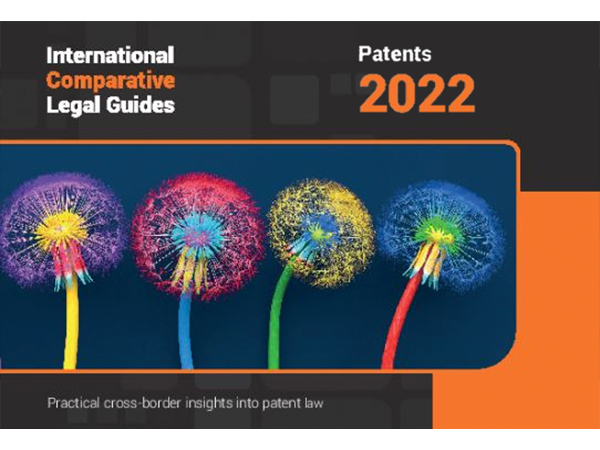
Intellectual Property
Viewpoints
Filter by:
Infringement Contentions: Fair Notice?
February 18, 2020 | Blog | By Michael Renaud, Adam Rizk, Catherine Xu
Some respondents at the ITC have taken advantage of using infringement contentions as a procedural tool to deny patent owners from getting their day in court. In some investigations, respondents have gone so far as to delay their own production of discovery until after the infringement contention deadline, then claim lack of fair notice when the patent owner uses the late discovery in its expert report.
Read more
Patenting Considerations for Artificial Intelligence in Biotech and Synthetic Biology – Part 2: Key Issues in Patent Subject Matter Eligibility
January 30, 2020 | Blog | By Terri Shieh-Newton, Marguerite McConihe
In our first blog in this multi-part series, we explored key considerations for protecting artificial intelligence (“AI”) inventions in biotech and synthetic biology. In this part 2 of the series, we will examine some key considerations and hurdles in patenting machine learning-based biotech or synthetic biology inventions.
Read more
An Informative PTAB Decision on Patent Eligibility under 35 U.S.C. § 101
January 30, 2020 | Blog | By Christina Sperry
The U.S. Patent Trial and Appeal Board (“PTAB”) recently designated its decision in Ex Parte HANNUN (Appeal 2018-003323) (“HANNUN”) as being informative regarding the application of the latest 2019 revised guidance on patent-eligible subject matter.
Read more
Update on Federal Register Notice on Artificial Intelligence (AI) Patent Issues
January 21, 2020 | Blog | By Michael Renaud, Marc Morley
As noted in our previous post, the U.S. Patent and Trademark Office (USPTO) published a request for comments for a list of questions regarding Artificial Intelligence (AI) Patent Issues in the Federal Register on August 21, 2019. While the comment period has closed, a few developments regarding AI patent issues have occurred that are particularly relevant.
Read more
Protecting Your Investment
January 15, 2020 | Video | By William Geary
Bill Geary reviews the most noteworthy IP-related investments companies make including product development and launch and acquisition or investment.
Read more
Federal Circuit Awards Attorney Fees to the Defendant Following Dismissal of Lawsuit by Plaintiff
January 7, 2020 | Blog | By Ken Jenkins
The Federal Circuit affirmed a district court award of over $360,000 in costs and attorneys’ fees against a non-practicing entity, citing the need “to deter future abusive litigation.”
Read more
Mintz Rings in 2020 with Top 10 Recognition for ITC Practice
January 6, 2020 | Blog
Mintz is recognized as among the top ten firms in ITC Section 337 litigation by Patexia in its inaugural "ITC Intelligence Report". We are pleased to be among the firms included in this publication and thrilled that it has come on the heels of a great year at the ITC for the Mintz team.
Read more
Year in Review: The Most Popular IP Posts of 2019
January 6, 2020 | Blog | By Christina Sperry
As 2020 begins and intellectual property (IP) strategies are being developed for the new year, it is a good time to reflect on what IP issues were prominent in 2019. According to many readers, hot topics included § 112 written description, prosecution history estoppel, and venue in the wake of TC Heartland.
Read more
Fox Factory v. SRAM – According to CAFC, No Presumption of Nexus for Bicycle Chainring Patents; IPR Decision Reversed and Remanded
January 2, 2020 | Blog | By Adam Samansky, Andrew DeVoogd, Joe Rutkowski
On December 18, 2019, the United States Court of Appeals for the Federal Circuit, in Fox Factory v. SRAM, Nos. 2018-2024 and 2018-2025, reversed the Board’s Final Written Decision in a pair of inter partes reviews (“IPRs”) that the challenged claims of U.S. Patent No. 9,182,027 (“the ’027 patent”) were not invalid as obvious, and remanded for further proceedings.
Read more
Out with the old, and in with the new: joint policy statement and recent cases confirm that injunctive relief on standard-essential patents is available at the ITC
December 23, 2019 | Blog | By Michael Renaud, James Wodarski, Andrew DeVoogd, Matthew Galica
When licensing discussions with an intransigent implementer break down, SEP owners face a difficult question: what remedies are available (injunctive relief or damages) in each U.S. court (International Trade Commission and U.S. district courts) as redress against infringement?
Read more
Federal Circuit affirms Safe Harbor ruling and $70 million award in Amgen Inc. v. Hospira, Inc.
December 20, 2019 | Blog | By Thomas Wintner, Peter Cuomo, Nana Liu
On December 16, 2019, the Court of Appeals for the Federal Circuit issued an opinion that fully upheld the District of Delaware’s denial of Hospira, Inc.’s motion for judgment as a matter of law (JMOL), or alternative motion for new trial, in Amgen Inc. v. Hospira, Inc., Nos. 2019-1067, 2019-1102.
Read more
District Court denies motion to dismiss despite Federal Circuit’s finding of patent invalidity in appeal of parallel ITC investigation
December 18, 2019 | Blog | By Andrew DeVoogd, Nana Liu
On December 5, 2019, Judge David C. Godbey of the Northern District of Texas denied the defendant Diebold Nixdorf, Inc.’s (“Diebold”) motion to dismiss under Rule 12(b)(6), in Nautilus Hyosung Inc. v. Diebold, Inc. et al., 3-16-cv-00364 (N.D. Tex.). Diebold filed the motion after the Federal Circuit reversed the International Trade Commission’s (“ITC”) finding of infringement in a parallel Section 337 investigation. Instead, the Federal Circuit held that the one patent in the suit was invalid due to indefiniteness.
Read more
Means-Plus-Function Structure – Can It Be Incorporated by Reference?
December 18, 2019 | Blog | By Peter Cuomo, Serge Subach
In its recent decision, Fiber, LLC. v. Ciena Corp., No. 2019-1005 (Fed. Cir. Nov. 21, 2019), the Court of Appeals for the Federal Circuit (Federal Circuit) issued a reminder that the structure necessary to satisfy the definiteness requirement for a means-plus-function in a claim cannot normally be found in material incorporated by reference.
Read more
New revised USMCA trade deal affects intellectual property rights, but not exclusivity period for biologics
December 17, 2019 | Blog | By Thomas Wintner, Nana Liu
On December 10, 2019, an agreement was reached between the United States, Mexico, and Canada on amendments to the U.S.-Mexico-Canada Agreement (“USMCA”). The USMCA, if ratified by each respective country, would replace the North American Free Trade Agreement (“NAFTA”), which has been in effect since January 1, 1994.
Read more
Supreme Court Rejects USPTO Attorney Fee Policy
December 17, 2019 | Blog | By Michael McNamara, Sean Casey
On December 11, 2019, the U.S. Supreme Court struck down the U.S. Patent and Trademark Office’s (USPTO) controversial policy of shifting attorneys’ fees in Peter v. NantKwest, Case No. 18-801. The Court ruled that the USPTO policy ran counter to the long-accepted “American Rule,” which says “[e]ach litigant pays his own attorney’s fees, win or lose, unless a statute or contract provides otherwise.”
Read more
PTAB allows Amending Claims on Grounds not raised by Petitioner, but were Addressed by the District Court in its Finding of Indefiniteness
December 10, 2019 | Blog | By William Meunier
To amend challenged claims during an Inter Partes Review (IPR), the patent owner must show that the proposed amendment responds to a ground of unpatentability at issue in the IPR trial.
Read more
Relying on Outside Prior Art in an IPR – Not so fast!
December 10, 2019 | Blog | By Daniel Weinger, Serge Subach
The Court of Appeals for the Federal Circuit (CAFC) has recently reminded the Patent Trial and Appeal Board (the Board) that it may not rely on evidence and arguments that fall outside the scope of the instituted grounds during Inter Partes Review (IPR) proceedings. In re IPR Licensing, Inc., No. 2018-1805 (Fed. Cir. Nov. 22, 2019).
Read more
HHS HIV Drug Lawsuit: Setting Precedent for Other High Priced Medications or Government Collaborations?
December 9, 2019 | Blog
On November 6, 2019, the bonds between the U.S. government and pharmaceutical companies were stretched when the U.S. Department of Health and Human Services (“HHS”) filed a patent infringement lawsuit against Gilead Sciences in Delaware federal court regarding Gilead’s popular HIV drugs, Truvada® and Descovy®.
Read more
Favorable Trends For Patent Owners Post-Aqua Products
November 21, 2019 | Blog | By Daniel Weinger
When former President Barack Obama signed the Leahy–Smith America Invents Act into law on Sept. 16, 2011, the patent system in the United States underwent one of its most sweeping and significant overhauls. The AIA replaced the then-existing post-grant review proceeding of inter partes reexamination with several new proceedings known as inter partes review, post grant review and covered business method patent review. Congress implemented AIA reviews to streamline disputes over patent validity, with the goal of reducing costs for all involved. In October 2017, the U.S. Court of Appeals for the Federal Circuit in Aqua Products Inc. v. Matal shifted the burden by putting it back on the challenger to prove unpatentability.
Read more
Explore Other Viewpoints:
- Antitrust
- Appellate
- Arbitration, Mediation & Alternate Dispute Resolution
- Artificial Intelligence
- Awards
- Bankruptcy & Restructuring
- California Land Use
- Class Action
- Complex Commercial Litigation
- Construction
- Consumer Product Safety
- Cross-Border Asset Recovery
- Debt Financing
- Direct Investing (M&A)
- Diversity
- EB-5 Financing
- Education & Nonprofits
- Employment
- Energy & Sustainability
- Environmental Enforcement Defense
- Environmental Law
- FDA Regulatory
- Federal Circuit Appeals
- Financial Institution Litigation
- Government Law
- Growth Equity
- Health Care
- Health Care Compliance, Fraud and Abuse, & Regulatory Counseling
- Health Care Enforcement & Investigations
- Health Care Transactions
- Health Information Privacy & Security
- IP Due Diligence
- IPRs & Other Post Grant Proceedings
- Immigration
- Insolvency & Creditor Rights Litigation
- Institutional Investor Class Action Recovery
- Insurance & Financial Services
- Insurance Consulting & Risk Management
- Insurance and Reinsurance Problem-Solving & Dispute Resolution
- Intellectual Property
- Investment Funds
- Israel
- Licensing & Technology Transactions
- Life Sciences
- Litigation & Investigations
- M&A Litigation
- ML Strategies
- Medicare, Medicaid and Commercial Coverage & Reimbursement
- Mergers & Acquisitions
- Patent Litigation
- Patent Prosecution & Strategic Counseling
- Pharmacy Benefits and PBM Contracting
- Portfolio Companies
- Privacy & Cybersecurity
- Private Client
- Private Equity
- Pro Bono
- Products Liability & Complex Tort
- Projects & Infrastructure
- Public Finance
- Real Estate Litigation
- Real Estate Transactions
- Real Estate, Construction & Infrastructure
- Retail & Consumer Products
- Securities & Capital Markets
- Securities Litigation
- Special Purpose Acquisition Company (SPACs)
- Sports & Entertainment
- Strategic IP Monetization & Licensing
- Tax
- Technology
- Technology, Communications & Media
- Technology, Communications & Media Litigation
- Trade Secrets
- Trademark & Copyright
- Trademark Litigation
- Venture Capital & Emerging Companies
- White Collar Defense & Government Investigations
- Women's Health and Technology







